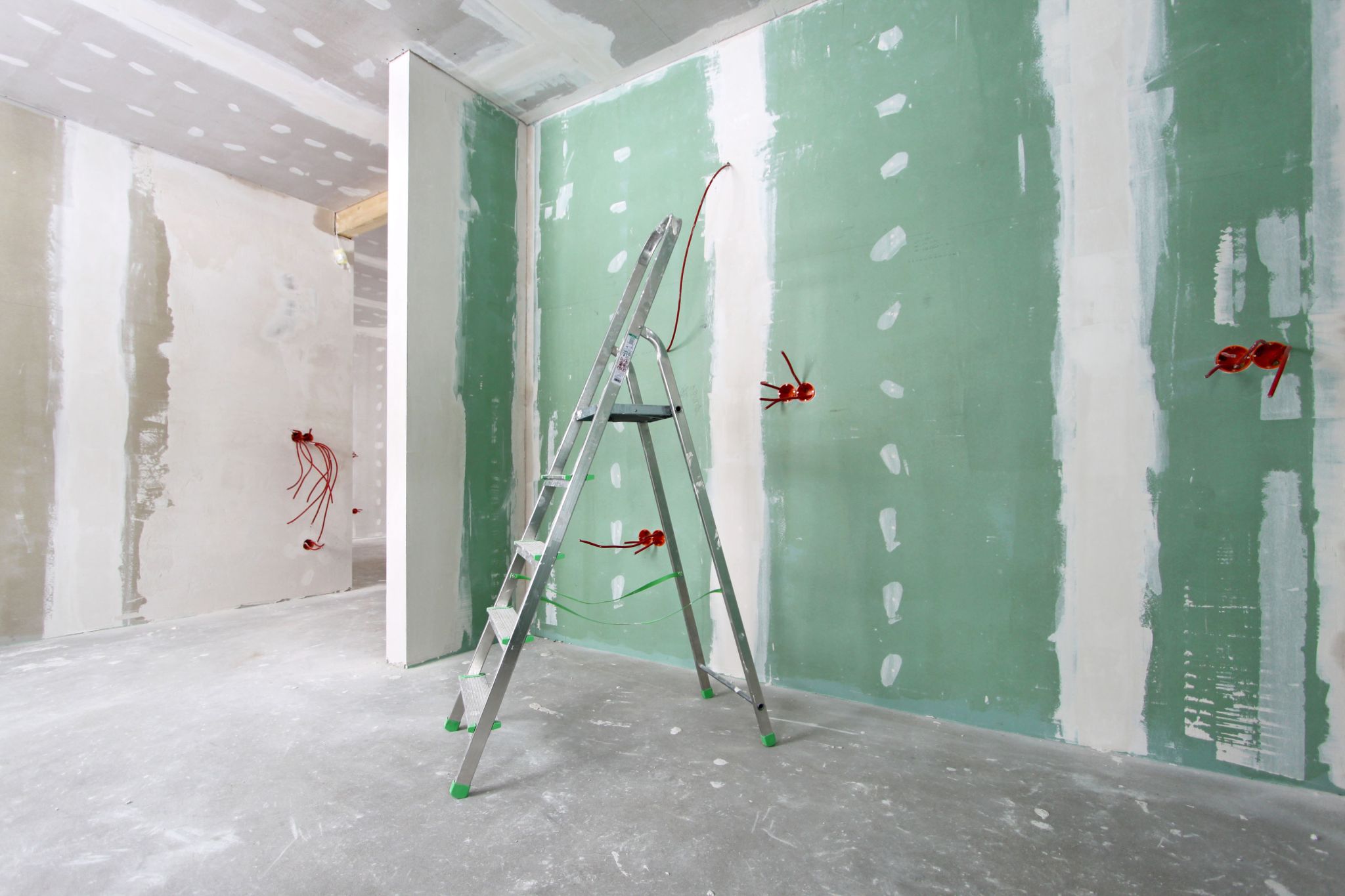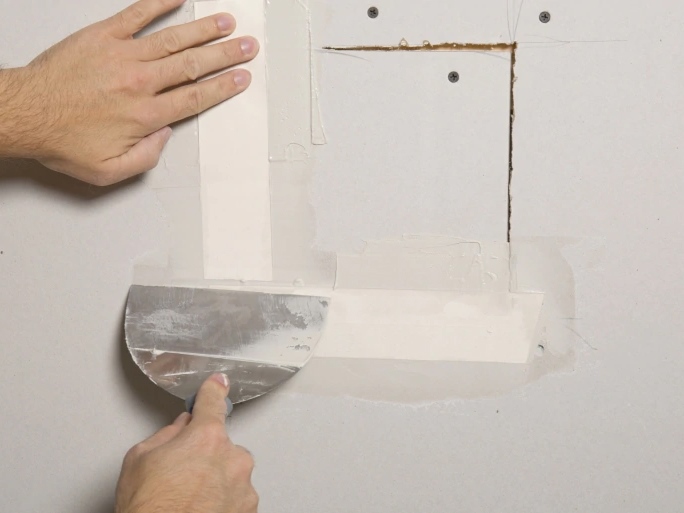Reliable Drywall Repair Techniques to Recover Your Wall surfaces
Reliable Drywall Repair Techniques to Recover Your Wall surfaces
Blog Article
Drywall Installation Made Easy: Tips for Perfect Outcomes
Drywall installation is often regarded as a complicated task, yet with the best method and expertise, it can become a manageable endeavor. Choosing high quality products and preparing the setup area are crucial initial steps that set the foundation for success. Mastering methods for cutting, hanging, and ending up drywall can substantially impact the result. As we discover these vital tips, you may find that also the tiniest adjustments in your technique can result in extremely boosted outcomes, leaving you to think about exactly how these methods can transform your following project.
Picking the Right Products
Picking the proper products for drywall installation is important to attaining a long lasting and visually pleasing finish. drywall installation. The primary component, drywall sheets, usually been available in numerous thicknesses, with 1/2-inch sheets being typical for indoor wall surfaces. For locations requiring extra dampness resistance, such as restrooms or cooking areas, think about utilizing green board or concrete board, which are specially created to stand up to humidity

In addition, selecting the right fasteners-- either nails or screws-- is vital for protecting the drywall to the framing. Drywall screws are typically preferred for their holding power and minimized danger of popping. Think about the finishing touches such as guide and paint, which not only enhance the look however also safeguard the drywall from dampness and wear.
Preparing the Installment Location
Before beginning the drywall installment procedure, it is important to prepare the setup area completely. A clean work space lessens the risk of damage to existing items and allows for reliable motion during installment.
Following, evaluate the wall surfaces and ceiling for any type of imperfections, such as fractures, openings, or mold. Address these issues beforehand; patch any problems and allow sufficient time for fixings to dry. Furthermore, make certain that electric outlets, switches, and pipes are appropriately placed and accounted for, as this will certainly impact drywall placement.
Take into consideration the ecological conditions too. A steady temperature level and humidity degree are crucial for optimal adhesion and efficiency of the drywall materials. Utilize a dehumidifier or heater to develop ideal conditions. if essential.
Trimming and Hanging Drywall
The secret to reliable drywall setup depends on the precise cutting and hanging of the panels. Begin by gauging the area properly, considering any blockages such as electric outlets or home windows. Use a straight edge and an utility blade to score the drywall along your dimensions, after that break it along the racked up line for a tidy break. For even more detailed cuts, such as around electrical outlets, a drywall saw can be utilized for accuracy.

Always work from the top down and left to right, making sure that you maintain a staggered pattern to improve security. Properly hanging the drywall sets the structure for a smooth finish, ultimately resulting in superior cause your drywall project.
Insulation and Mudding Techniques
While proper cutting and hanging of drywall sets the phase, the following critical action includes grasping taping and mudding methods to ensure a seamless finish. Taping is vital for strengthening joints and avoiding splits; it includes embedding tape right into the used joint compound (mud) Beginning with a high quality fiberglass or paper tape, applying the tape over the joint and pushing it right into the damp mud using a taping knife, making sure no air bubbles remain.
As soon as the tape remains in location, apply a slim layer of joint compound over the tape, feathering the sides to produce a smooth shift to the drywall surface. Allow this layer to completely dry totally before sanding it gently to remove flaws. Repeat this procedure, applying extra layers of mud as essential-- commonly a couple of coats-- while slowly broadening the application location with each layer to accomplish a smooth look.
After the final layer dries out, sand the surface area with a fine-grit sandpaper up until smooth. drywall contractor. Remember to put on a mask throughout fining sand to prevent breathing in dust particles. Understanding these taping and mudding strategies is vital for achieving a professional-quality surface in your drywall installment
Finishing Touches for Excellence
Achieving a remarkable drywall installment exceeds mudding and taping; it finishes in the ending up touches that raise the overall appearance. These last steps are important in guaranteeing a professional-grade coating that enhances the aesthetics of your room.
Begin by fining sand the dried out joint substance to create a smooth surface area. Make use of a fine-grit sandpaper and a fining sand block or pole sander for optimal control. Pay certain attention to corners and edges, as these areas often tend to require even more careful work. After fining sand, wipe down the wall surfaces with a wet cloth to get rid of any dirt bits, making certain a clean surface for paint.
Next, use a guide specifically created for drywall. This step is necessary, as it aids secure the joint substance and supplies a consistent base for the topcoat. As soon as the visit site primer dries out, inspect for any type of flaws, and repair as needed.
Final Thought
In verdict, successful drywall installation pivots on the careful choice of materials, thorough prep work of the installment location, and accurate execution of reducing and hanging strategies. Mastery of taping and mudding processes is crucial for attaining a smooth coating.
Drywall setup is usually perceived as a challenging task, yet with the ideal method and understanding, it can come to be a convenient undertaking.Picking the proper products for drywall setup is important to accomplishing a resilient and cosmetically pleasing finish.Before starting the drywall installment procedure, it is essential to prepare the installation area thoroughly. Mastering these taping and mudding techniques is important for accomplishing a professional-quality coating in your go to my site drywall setup.
In conclusion, successful drywall installment hinges on the cautious choice of products, detailed prep work of the link installation area, and exact implementation of reducing and hanging strategies.
Report this page